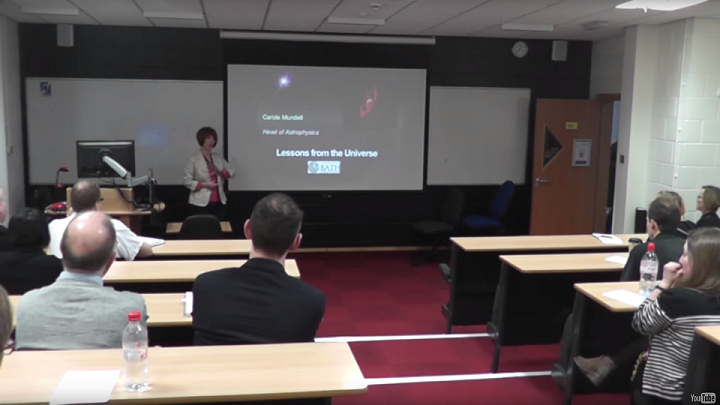On 23rd October Professor Carole Mundell shared her Lessons from the Universe to a wide audience of academic staff, support staff, researchers and students. One reflection of the session was:
This was a truly inspirational talk which made me think about how familiar technology could be used to do real research
Please use the comments section below to discuss your thoughts on revolutionary research and it's link to teaching and engagement. You can also watch a recording of the talk below.

The event started with a brief overview of astrophysics, including the fact that it is possible to tell things such as the the ages of galaxies by their colours. The goal driven problems which Astrophysicists are trying to solve are both exciting and extreme, where records are continually broken in all aspects, including largest magnetic field, most distant object, and the list continues. Due to these extremes being measured, there is a continual drive for technology to be developed at such a fast pace there are noticeable developments every year.
Carole then described how telescopes around the world are now being used in arrays. These arrays can provide data which would only otherwise be possible to obtain by manufacturing an impossibly large telescopes. The next topic was gamma ray bursts - extremely high energy bursts which were detected for the first time 50 years ago by accident, and can occur in a timespan of milliseconds. In order to monitor these in the current day we need real time observation, creating vast amounts of data. This data can be automatically probed and observed in order to find a tiny unique bit of data amongst data collected from the whole universe. In order to develop these technologies a cross disciplinary set of skills is required, particularly engineers who can design and build these technologies.
Before the final remarks on the next decade and beyond, and how Astrophysics links to all other aspects of our lives, Carole joked that we could use Mantis shrimp with telescopes to observe the cosmos with. These shrimp have 12-colour imaging which is better than both the 3-colour imaging which humans have, and also better than the technology we currently have. Our goal is to use biomimicry to create new technology which can surpass current technologies.
In order to inspire a new generation of Astrophysicists, it is vital to work with current students and engage them in solving real life problems and revolutionary research. Not only does citizen science assist scientific research developments, but by including people of all ages - including school based programmes - everyone can share excitement of taking ownership of new data.
One student who attended the event confirmed this by saying:
The more students who turn up to inspiring talks on state of the art developments, the more likely someone will be motivated, and ultimately these motivations will cause the future developments and technologies we see in the world.
Please have a look at more of our upcoming events list, including using multimedia message walls to collate students' thoughts, and technologies to help with flipped teaching.
Watch a video of the Carole Mundell's Lessons from the Universe below:
Respond



